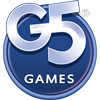CYPHER was started in May 2009. In this game, you play as an agent on Mars, bringing down the corrupt government through hacking and espionage. It’s currently the flagship product of the Soenneker studio. CYPHER has already established itself as a significant upcoming player in the indie game development scene.
“It started just like most projects - in the basement, with no idea if the tools in the developer’s hands were the ones he should be utilizing. The most important word of the previous sentence is ‘STARTED’,” Jake Soenneker, the lead developer emphasizes.
Bringing a Childhood Online Game Back to Life
The beginning is indeed the most crucial step of any plan, and the fact that I had no idea what language I wanted to use, or where to even begin, made the whole thing seem quite daunting. I knew I wanted to make a game though, so I began with making things move: first created a few images, animated them, and moved the sprites across the screen. I assume this is not the first time you hear about this design progression, so let’s skip it and have a look a few months ahead.
Silencer was an online game in the late 90s; it belonged to the World Opponent Network. I remembered playing Silencer on my dial-up connection with thousands of other players, and after discovering the game was dead, I decided to revive it and build it myself. At that time, I didn’t understand what an extensive undertaking this was, and in no shape or form am I recommending anyone enter game development by starting with such a huge project. Nevertheless, it was the game I wanted to play, so I didn’t think of going back. I wasn’t making it for money; I wasn’t creating it for any reason other than to experience the incredible heart-thumping joy I had as a child.
In March 2010, the initial public release took place showcasing the basic features, environment, and movement of the agent in the game. This was the first time I launched the game on the internet, and it was for Windows XP+ platforms. At this point, no multiplayer or online code had been written, so this was still the underlying monster that needed to be addressed. The core audience was teenagers and adults who were into cyberpunk. The reaction was good, the game sparked interest, but the overall decision was that it still needed significant amounts of work. I continued with this massive project, and the application was beginning to take shape. Joshua joined the team at this time, and he has been an absolutely vital part of CYPHER since. A bit more than a year later, online games became possible, providing not just an opportunity of playing together, but also networking. A problem not considered before began to surface: how were we supposed to continue to develop the game while maintaining an online user base that could play and test it?

We didn’t have much of a testing base, and thus wanted to engage our players. We were releasing new builds with lots of changes very quickly, and having users re-download the whole game was turning people off. We also needed to have all of the players using the exact same files to keep it fair, so the update system was how we solved that new problem.
A Stable System First, Content Next
I started building an updates system. We constructed a way for players to contact an update server that could analyze their current game version and give the latest one if they needed it. As the number of projects we needed (the map editor, updater, update server, lobby server, game server, extraction module, and others, not including the client itself) continued to grow, we understood we needed to construct not only the applications themselves, but also the libraries to hold all of the reusable code.
At the same time, we were still learning, and that was surpassing anything we had been at before. New methodologies we mastered allowed us to refactor and re-design, and the code we were writing was becoming future-proof. The programming being done was solving issues so that we wouldn’t have to face them again, and this made us hope for easy and rewarding progress.
Our code advancement was outstanding, but the game itself was not flowering as much as we wanted, so its components were (and still are) constantly re-prioritized. Our hindsight shows that better decisions were possible, but we made the best choices we could at that time.
Re-evaluating is healthy for any project. We decided on a few factors to be the key ones in our software, and with the CYPHER December 2013 release, we focused on stability, performance, and overall usability. We wanted to give the players an error-free experience, and to assemble a system that was going to work well for ourselves years from now. Content can always be added, so we didn’t want to skimp on the stuff that mattered in the backend so we could keep going without hindrance. We wanted to stay away from extending new features past the point that we could support them, and make sure our underlying processes in the code were solid enough, so that we didn’t need to rebuild them in the future when they’d take a lot longer to do if we didn’t address the issues with them now.

A Good Game is Cool, but Experience is Better
The best parts of CYPHER are the knowledge it has given us, the unity we achieved as a team, and the places it has brought us to. We gained experience with the tools we needed to be productive employees, and many times we applied the methodologies used in CYPHER to our other projects, and vice versa.

The latest road CYPHER has brought us to has been Casual Connect USA 2014 in San Francisco. We were happy to be able to display the game in a full-featured venue in front of thousands of game industry professionals. We were given the chance to see what a large variety of people thought of the game, and they weren’t necessarily finding us through our current channels we have set up. We were getting feedback previously from players who had preconceptions, and allowing people with new perceptions to check it out gave us a ton of interesting ideas that we would have never got otherwise. The reception was awesome, and several people said CYPHER had the most potential at the entire conference.



“To accomplish great things we must not only act, but also dream; not only plan, but also believe” - Anatole France paints a picture that Soenneker lives by. The team is looking towards the future with CYPHER; whose new modern art and gameplay will revolutionize the future of platformers. We will not stop working towards their goal of providing a game the industry will celebrate. My advice is to find your purpose, work on an image that defines you, and strive to be great. The achievement should not only be dedication towards pre-defined goals, but more of a path in life you’ll enjoy.
CYPHER is currently available for Windows XP, Windows Vista, 7, 8, 8.1 (32 and 64 bit). In the future, the developers want to see the game on Linux and Mac OS, and then to extend to consoles.

Comments









